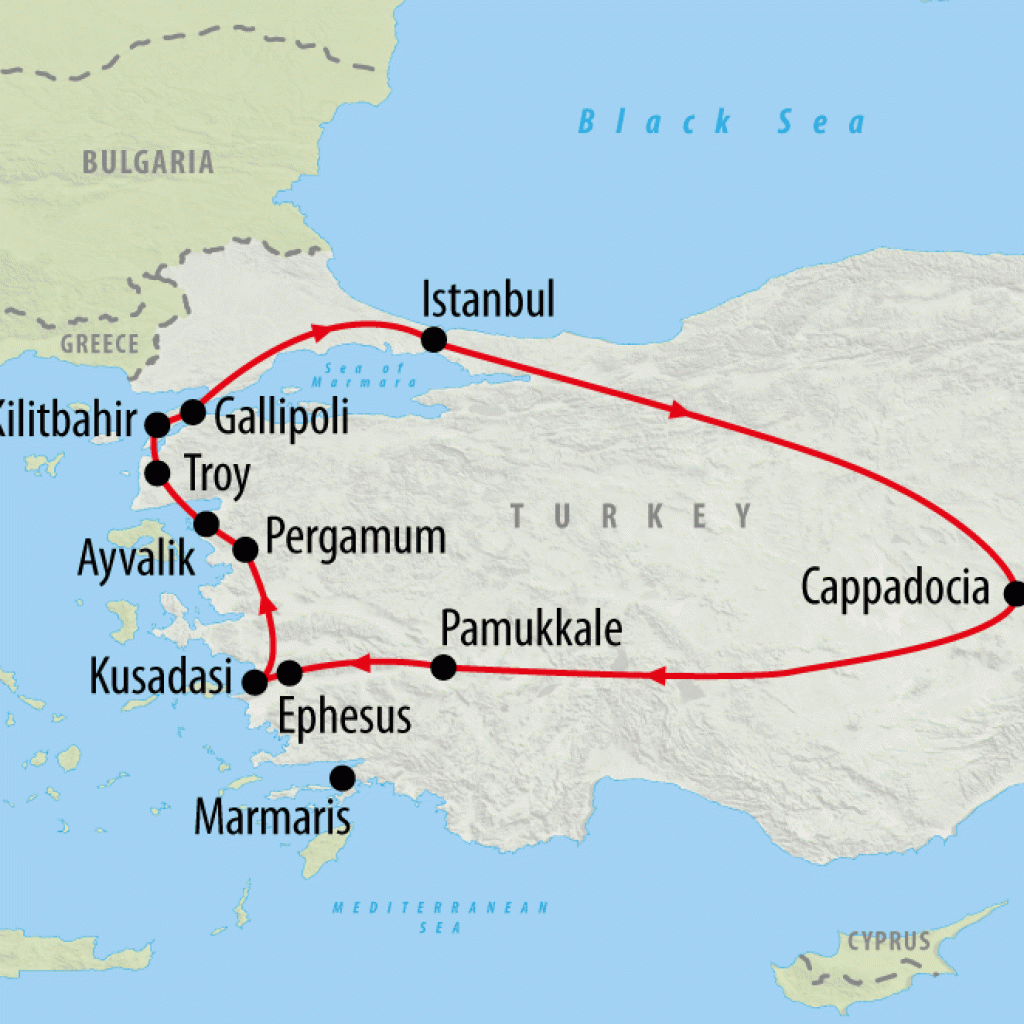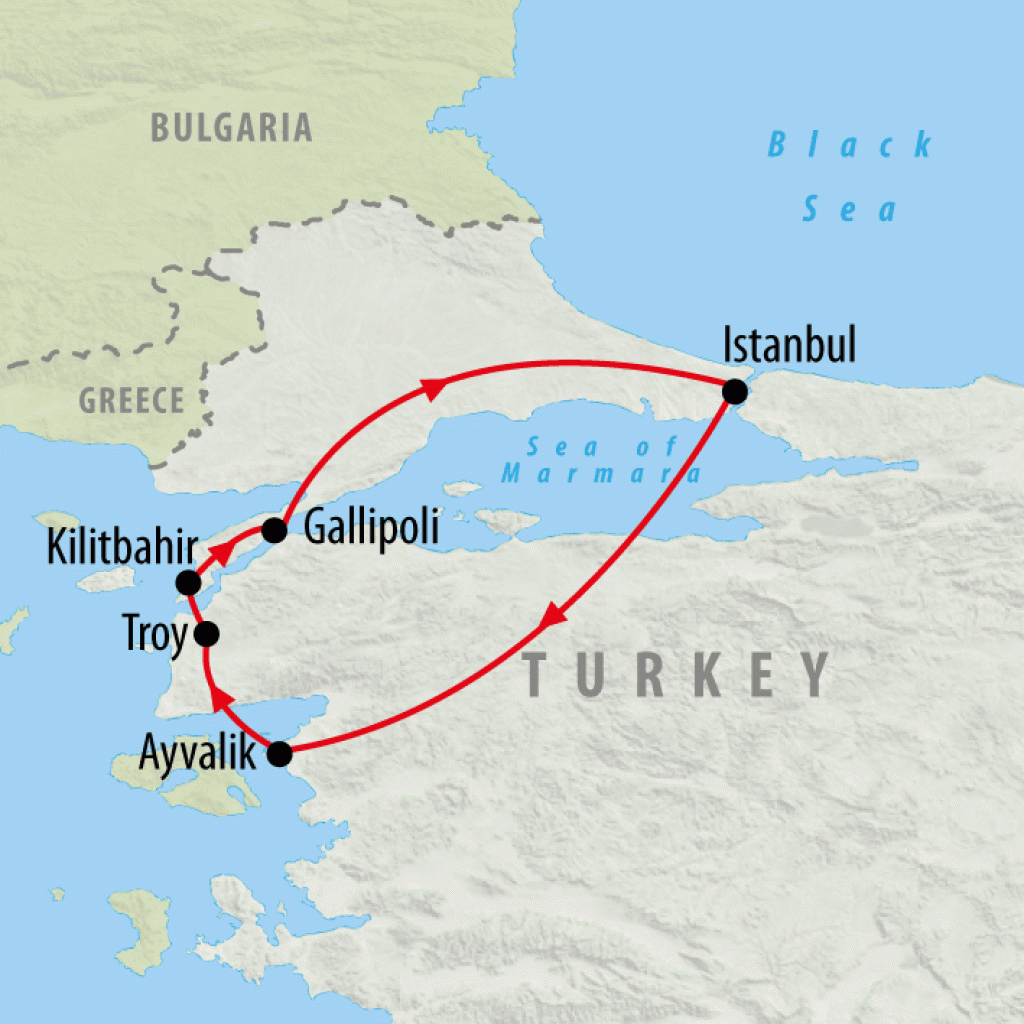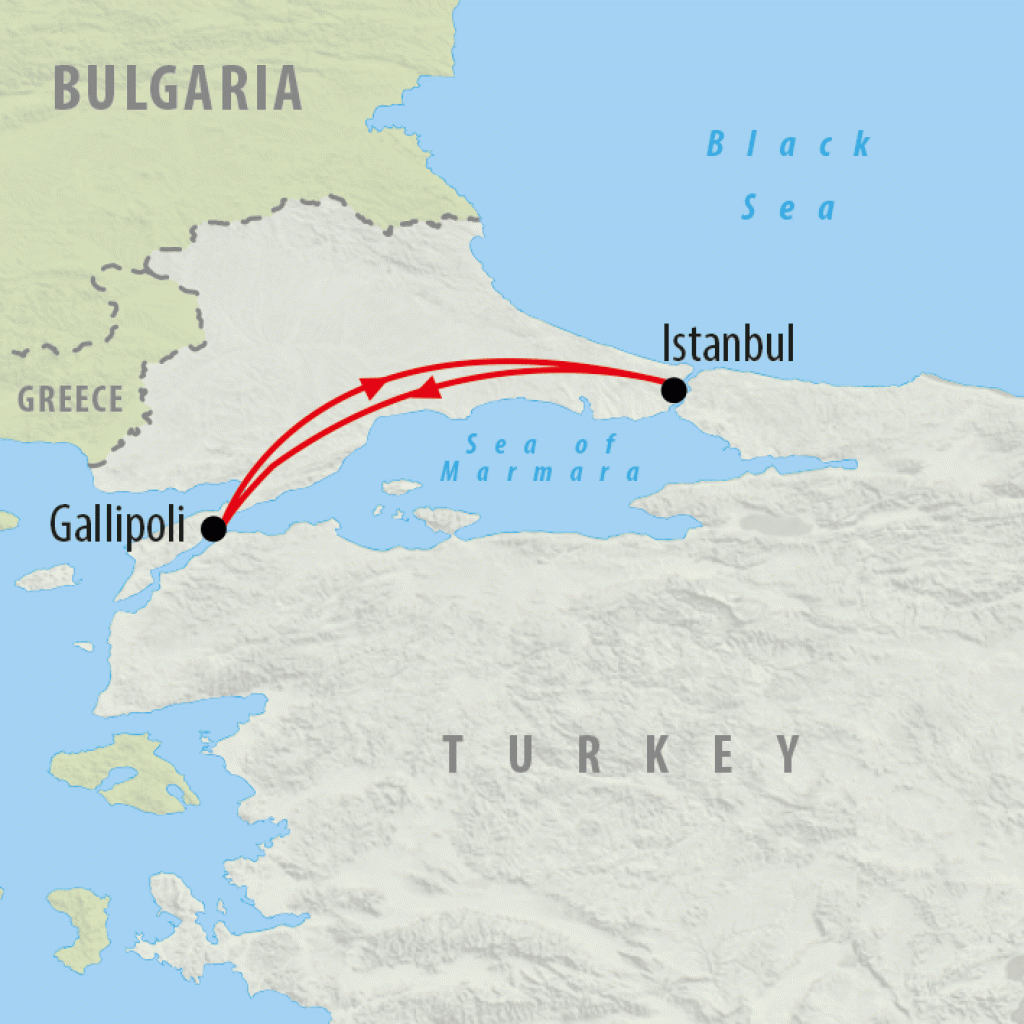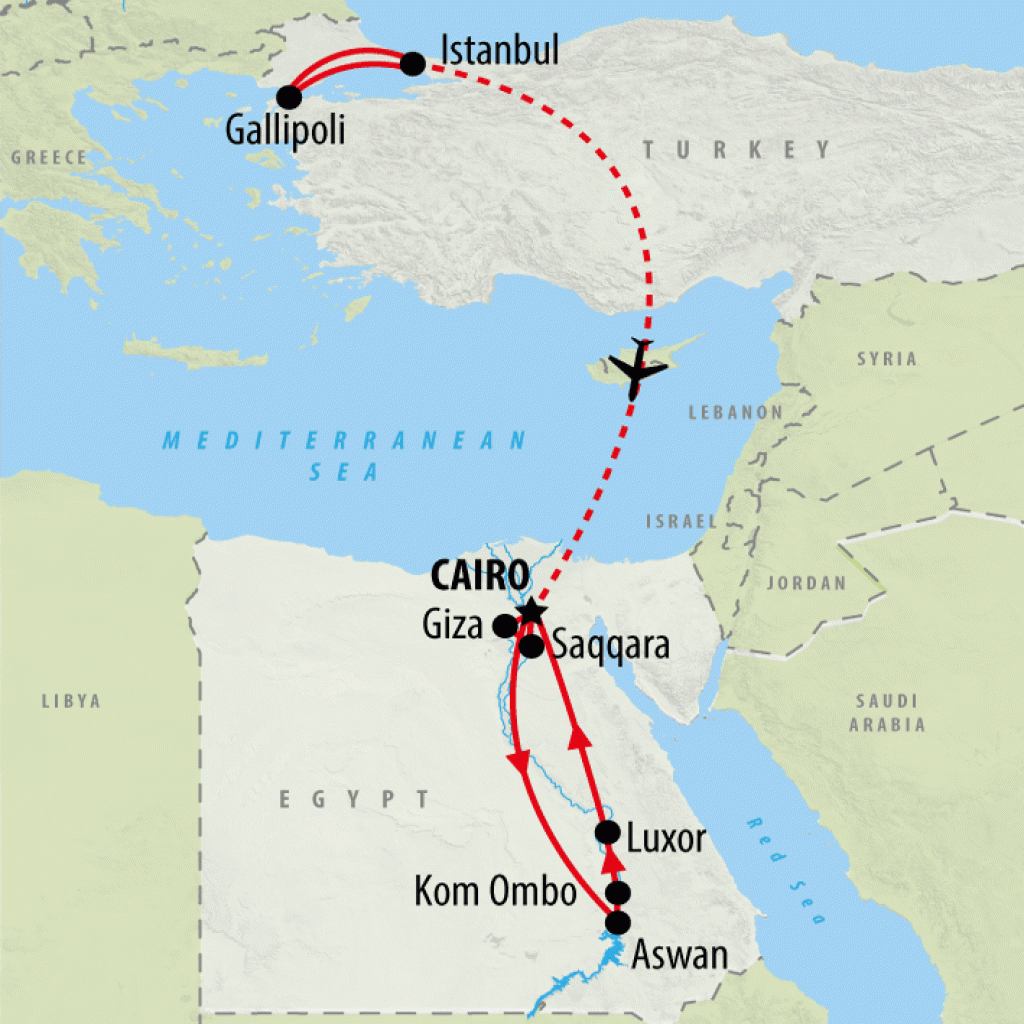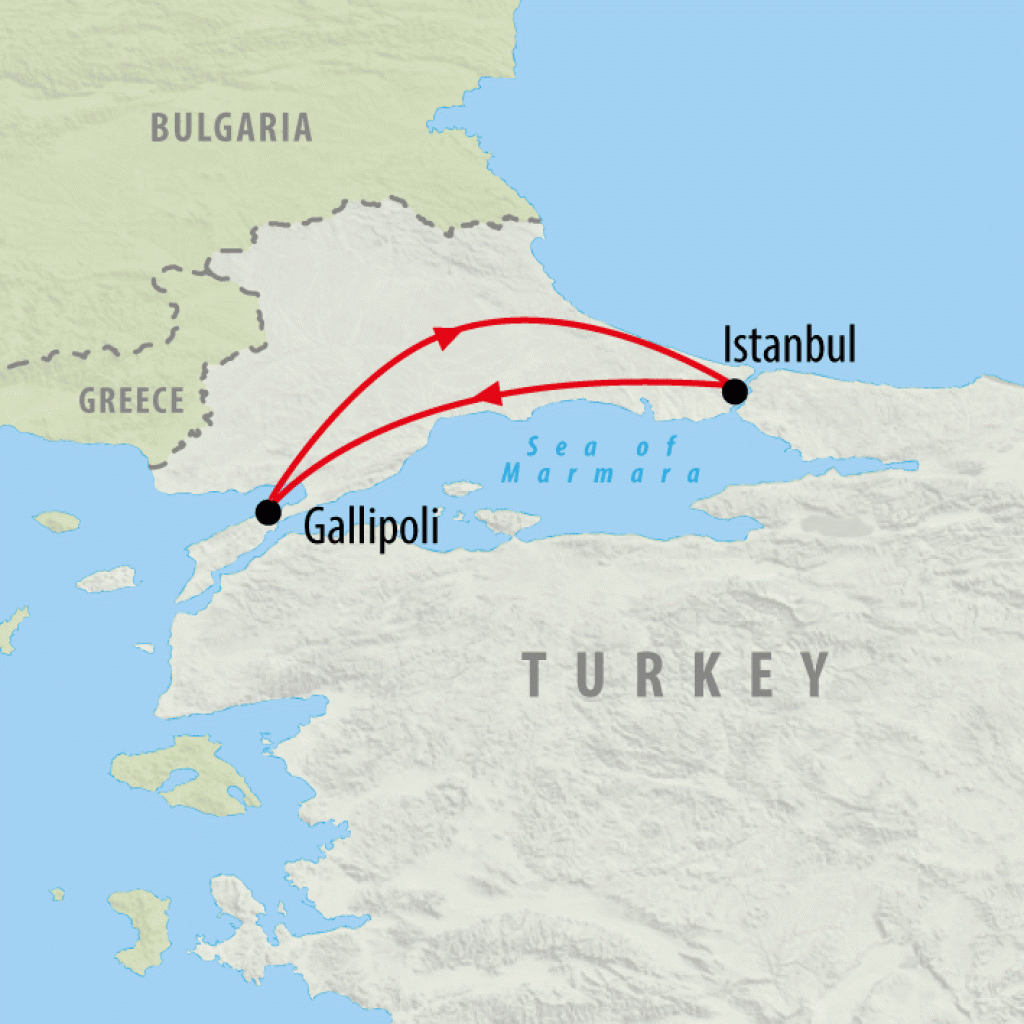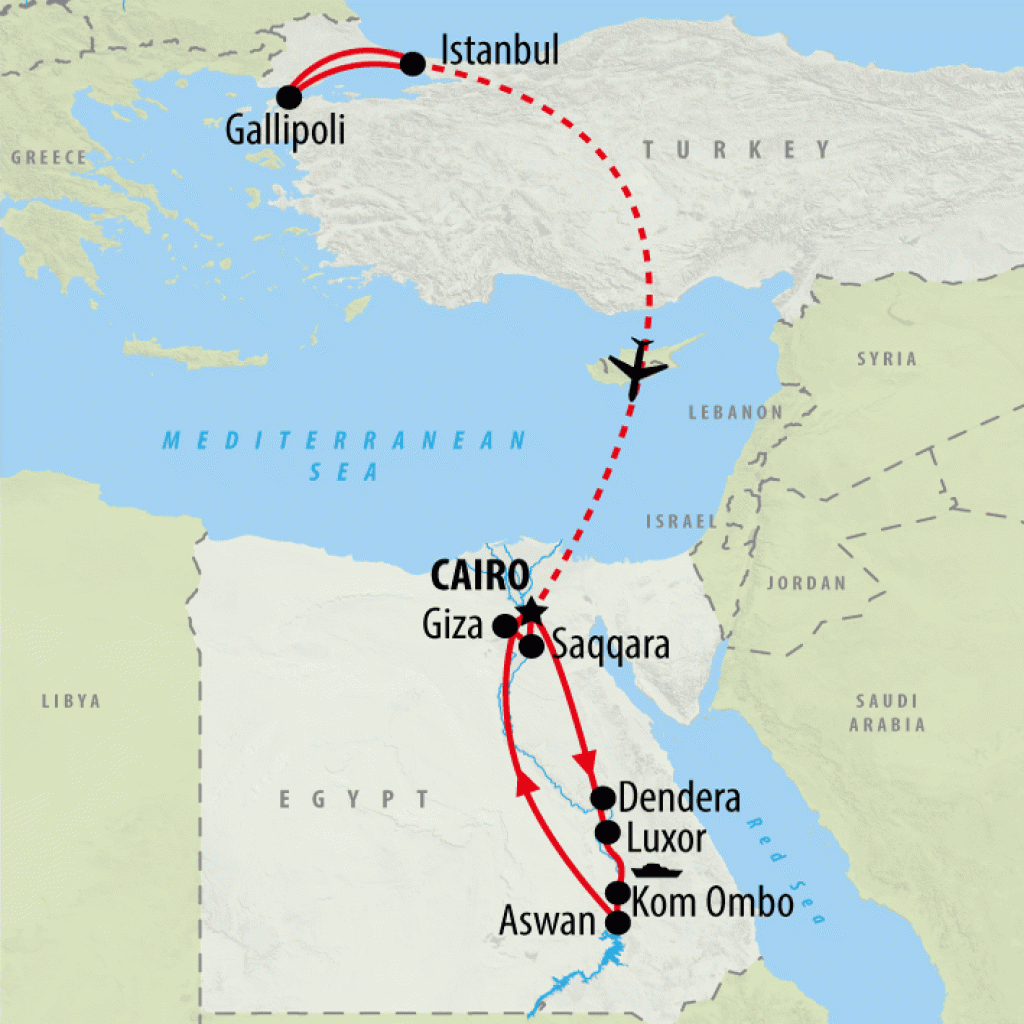About the Gallipoli Campaign
On 15th February 1915 the British launched a naval campaign against the Turkish forces at the straits of the Dardanelles in an attempt to gain control of the straits and to open up a third front. After the naval attack failed it was decided that land troops from Britain, Australia and New Zealand would be brought in to hold back the Turkish defenses so the navy could push through to the Dardanelles.
Two months later, on 25th April 1915, the first of the Australian and New Zealand forces landed on the eastern coast of the Gallipoli Peninsula near ANZAC Cove, and the British at Cape Helles in the south. Unfortunately for the Allied forced the two month interval between the initial naval attack and arrival of the land troops gave the Turkish army plenty of time to reinforce its defenses. What followed were nine months of ferocious battle, which finally culminated with the withdrawal of the Allied troops in December 1915 and January 1916, and the tragic loss of some 36,000 Australian, New Zealand and British lives.
Today the soldiers who fought here are commemorated at the many memorials dotting the region. Once an important battlefield, Lone Pine now houses a cemetery and memorial dedicated to the Australian soldiers who died during the campaign and is the location of the Australian service on ANZAC Day. In August 1915 Chunuk Bair was the site of a battle fought between Turkish and New Zealand and British troops. Today the site contains a poignant cemetery and tall obelisk memorial, and it is the location of the New Zealand service on ANZAC Day. In addition to these monuments, there is also the Twelve Tree Copse, Hill 60, Shell Green Cemetery and Helles Memorial.
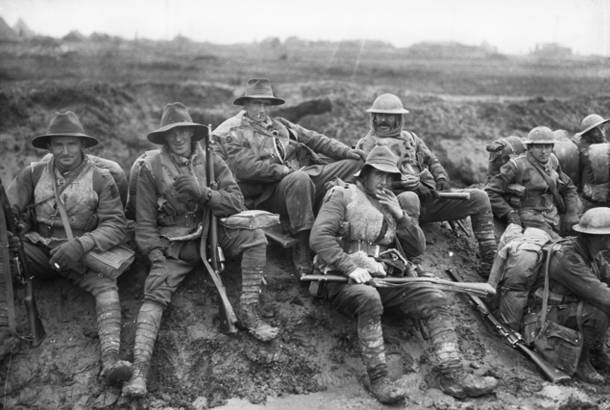
The Royal Engineers
What once began as a small force of the Australian army focused on costal defenses, the Royal Australian Engineers is now one of the only Australian ANZAC battalions still serving today. While the origin of the division dates back to 1860, it was not until 1936 that it was given Royal Assent and the title Royal Australian Engineers. During World War I some 40 engineer units were active and served as a force of distinction in several important conflicts around the world including Palestine, France, Belgium and, of course, Gallipoli.
One of the many responsibilities of the Australian Engineers during the Gallipoli Campaign was the important role of acting as signallers. Signallers were crucial for communication between the commanders and their troops, as to their location, what they were doing and to ensure that they had enough supplies. They did this by laying wires between their headquarters and the troops on the front line, which they would use after nightfall. The role of a signaller was extremely dangerous, and required vast amounts of bravery, as it meant they often had to put themselves in vulnerable situations, including maintaining and repairing these lines of communications when they were damaged as well as running through the trenches to pass on and receive messages.
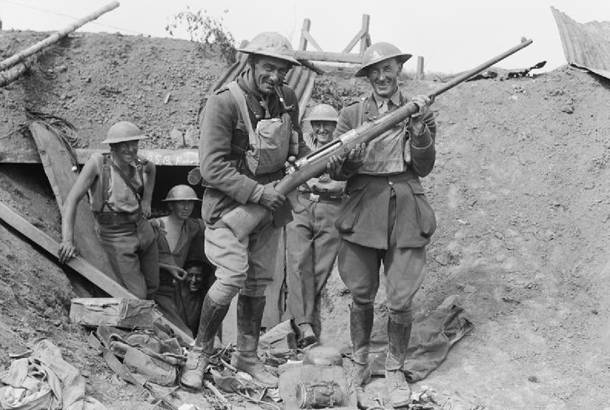
The Otago Mounted Rifles
Formed in 1911, the Otago Mounted Rifles were a New Zealand Regiment put together purely for service in World War One, then known as the Great War. They comprised of units from the Territorial Force including a number of Rifle companies from the South Island. When they left New Zealand with their horses in tow they believed they would be serving as mounted troops, however when they arrived in Gallipoli they discovered they were to become infantrymen. As well as serving in the Gallipoli Campaign they were the only New Zealand Mounted troops to serve in Europe on the Western Front. Other notable battles that they were involved in included the Battle of Flers-Courcelette, Battle of Le Transloy, Battle of Arras and the Battle of Havrincourt.
While many in the Otago Mounted Rifles tragically lost their lives in Gallipoli, some did return home. Perhaps the most notable was Sir Henry Kelliher who later became one of New Zealand’s most respected philanthropists and businessmen. Sir Henry first enlisted with the Rifles when he was a teenager before going on to fight at Gallipoli and at the Somme in France during the First World War. On returning to New Zealand he became a successful business man in the wine and spirit business and went on to implement a free milk scheme for New Zealand school children during the depression. He was later knighted in 1963.
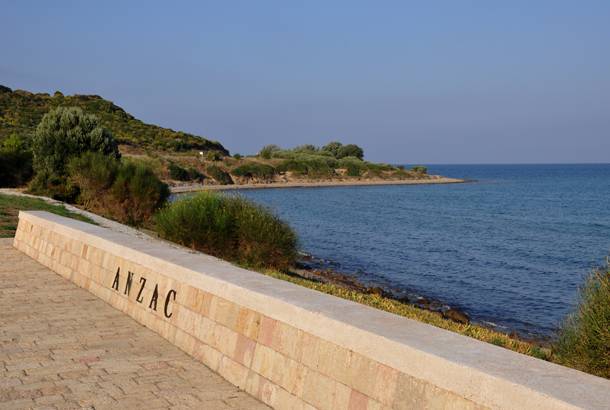
The 7th Brigade
First formed in 1915, the 7th Bridge is a combined unit of the Australian Army and one of the only Australian units that fought in the Gallipoli Campaign and on the Western Front and that is still serving today. The 7th Brigade were not among the first set of troops to land at ANZAC Cove, but arrived later in September not long after the disastrous August campaigns. They were also one of the first brigades to be evacuated from ANZAC Cove in December 1915.
The evacuation from the peninsula was very clever. Once the decision was made for the troops to evacuate, a genius plan of escape was formed so that the Turkish army would be unaware of their movements. Considered one of the greatest successes of the Gallipoli Campaign, it is estimated that over 36,000 troops were withdrawn from the area without the knowledge of the Turkish army. Clever ruses such as William Scurry’s self-firing rifle were designed to deceive the opposing troops into believing the Allied forces were still fighting back long after they had already left.
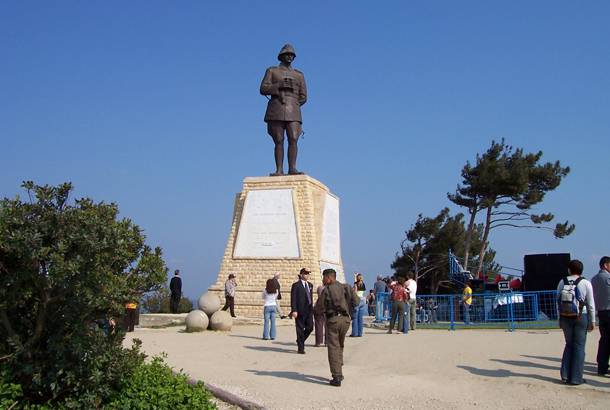
The Wellington Battalion
The Wellington Battalion was a New Zealand troop that served in the Gallipoli Campaign of the First World War. Most famous for their important part in the capture of Chunuk Bair, they were led by a brave soul called William Malone. Lieutenant-Colonel Malone had a unique way of running his troops in that he did not always agree with the orders coming from above. One of his most commonly noted defiance was his refusal to follow the order for his troop to go into battle during day light hours- what he defined as a suicide mission; he instead released them under the cover of darkness where they successfully managed to get Chunuk Bair from the Turkish troops.
They lost 690 men that day and a couple of days later they were relieved of their post by the 6th Battalion of the Loyal North Lancashire Regiment and some of the 5th Battalion of the Wiltshire Regiment. Unfortunately their hard work did not pay off for too long and on 10th August Ataturk and his army led an overwhelming counter attack and the Allies were toppled. The bloodshed was immense with the complete Loyal North Lancashire Regiment wiped out.
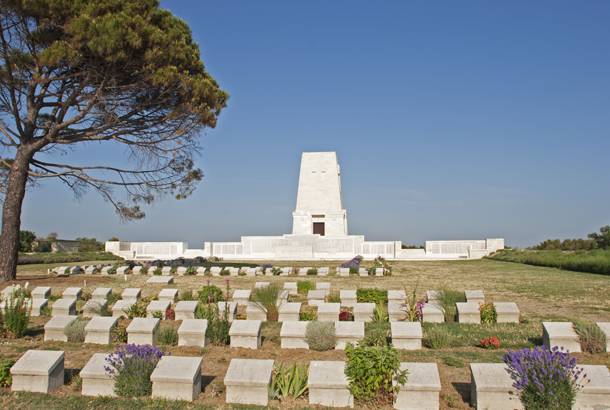
The 2nd Australian Light Horse
The 2nd Australian Light Horse was a mounted regiment active from the year of 1914 through to 1919 and among the many battalions fighting during the Gallipoli Campaign of the First World War. The regiment was formed after the Australian government promised Britain 20,000 troops to use at their discretion during the Great War, and was mostly comprised of Australian farm workers who had been recruited for their horsemanship and rifle skills.
Anyone who has seen the film called Gallipoli will recall Frank Dunne’s character, played by Mel Gibson, trying to get into the brigade but failing due to his lack of riding skills. Ironically by the time the brigade arrived at ANZAC Cove on the Gallipoli Peninsula they were without their horses and had to see the Gallipoli Campaign through as foot soldiers. During their time here they played mostly a defensive role and after the evacuation went on to fight in Egypt as part of the ANZAC Mounted Division. Over a hundred fallen soldiers from the 2nd Australian Light Horse are buried at Shell Green Cemetery near ANZAC Cove.
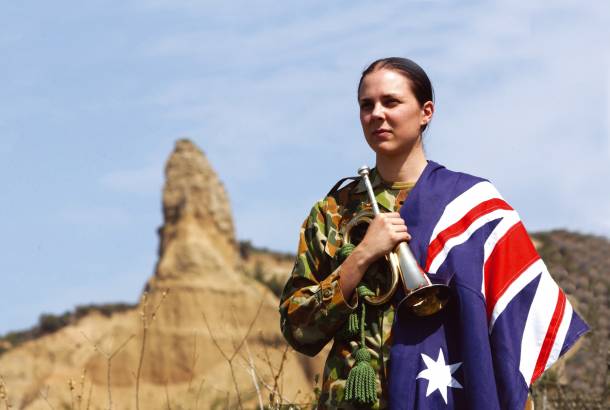
Join us for ANZAC Day commemorations
We offer a range of ANZAC Day tours for those interested in learning more about ANZAC and paying their respects to the fallen soldiers. Starting in Istanbul, our travelers will explore the battlefields of Gallipoli where the doomed campaign took place before heading to the memorial sites of ANZAC Cove, Lone Pine, Chunuk Bair, Johnston’s Jolly and the trenches. On ANZAC Day itself, we will attend a poignant Dawn Service, which lasts an hour, before our Australian group members head to Lone Pine Memorial for some independent exploration and reflection and our New Zealanders make their way to Chunuk Bair for another service. Our ANZAC tours provide participants with a wealth of knowledge, contextualized by site visits in order to create a trip that is simultaneously a sobering experience and a fascinating insight into history.















